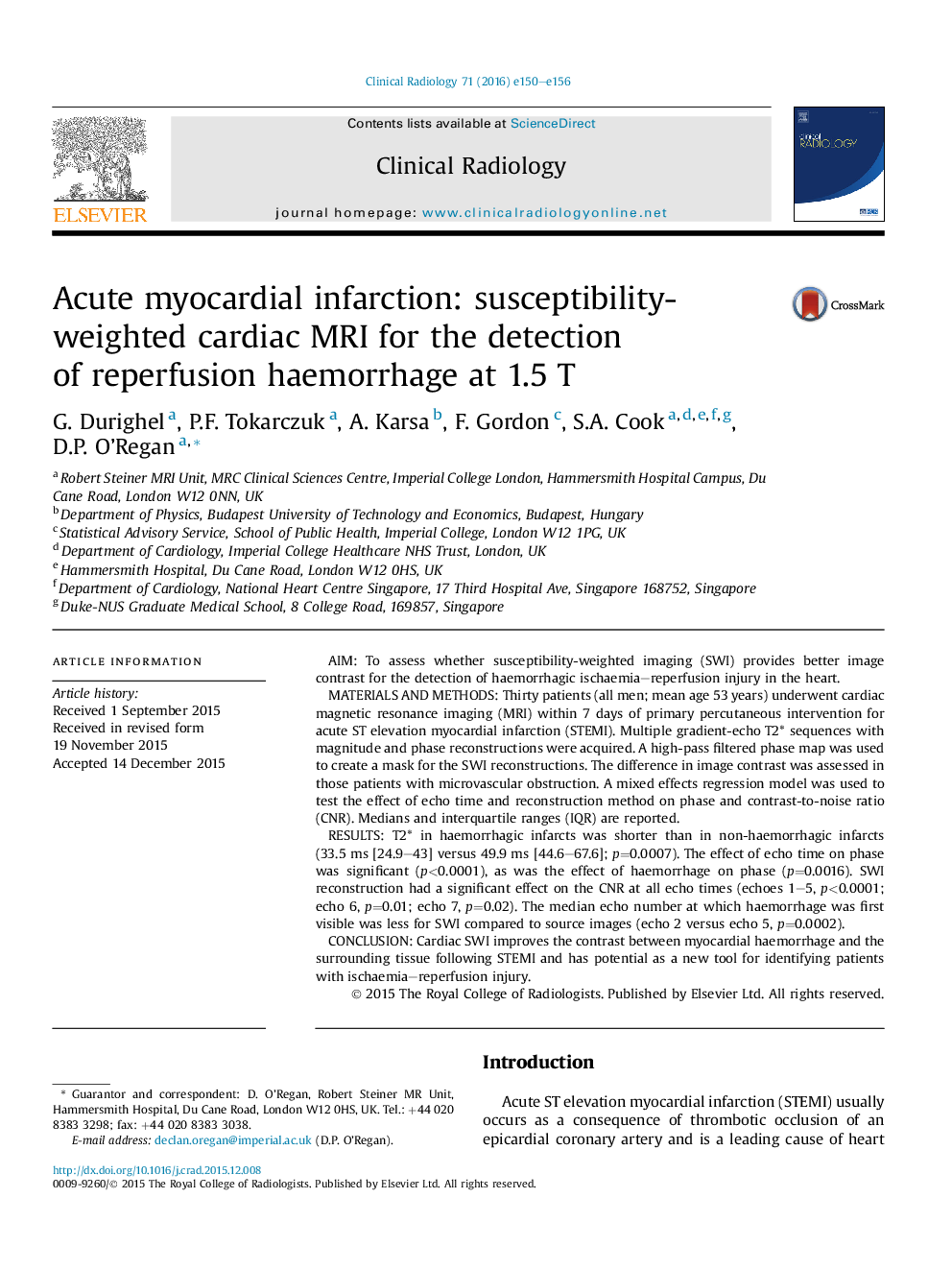| Article ID | Journal | Published Year | Pages | File Type |
|---|---|---|---|---|
| 3981386 | Clinical Radiology | 2016 | 7 Pages |
•Cardiac susceptibility-weighted imaging (SWI) is feasible at 1.5T.•Combining phase and modulus data allows blood products to be seen at shorter echo times.•This sequence improves visualisation of reperfusion myocardial haemorrhage.
AimTo assess whether susceptibility-weighted imaging (SWI) provides better image contrast for the detection of haemorrhagic ischaemia–reperfusion injury in the heart.Materials and methodsThirty patients (all men; mean age 53 years) underwent cardiac magnetic resonance imaging (MRI) within 7 days of primary percutaneous intervention for acute ST elevation myocardial infarction (STEMI). Multiple gradient-echo T2* sequences with magnitude and phase reconstructions were acquired. A high-pass filtered phase map was used to create a mask for the SWI reconstructions. The difference in image contrast was assessed in those patients with microvascular obstruction. A mixed effects regression model was used to test the effect of echo time and reconstruction method on phase and contrast-to-noise ratio (CNR). Medians and interquartile ranges (IQR) are reported.ResultsT2* in haemorrhagic infarcts was shorter than in non-haemorrhagic infarcts (33.5 ms [24.9–43] versus 49.9 ms [44.6–67.6]; p=0.0007). The effect of echo time on phase was significant (p<0.0001), as was the effect of haemorrhage on phase (p=0.0016). SWI reconstruction had a significant effect on the CNR at all echo times (echoes 1–5, p<0.0001; echo 6, p=0.01; echo 7, p=0.02). The median echo number at which haemorrhage was first visible was less for SWI compared to source images (echo 2 versus echo 5, p=0.0002).ConclusionCardiac SWI improves the contrast between myocardial haemorrhage and the surrounding tissue following STEMI and has potential as a new tool for identifying patients with ischaemia–reperfusion injury.
